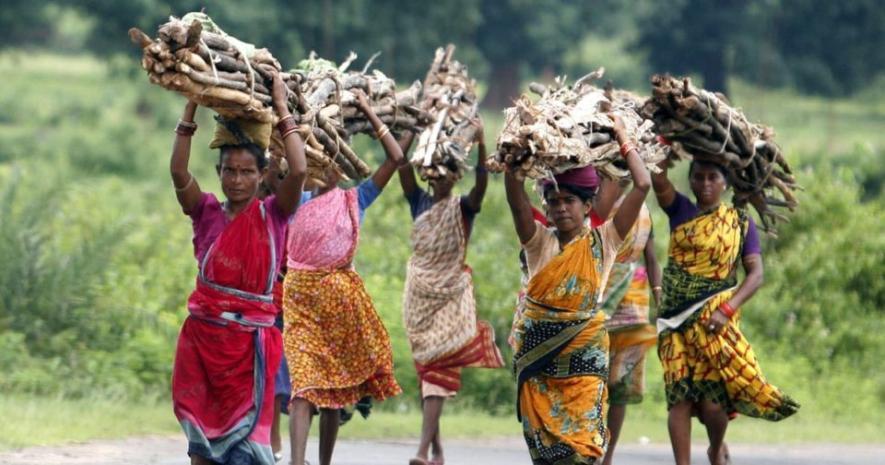Jharkhand: Search on for Alternative to Corrupt, Divisive Politics

Jharkhand will go to polls on November 13 and 20, 2024, to elect its sixth Legislative Assembly. Formed in November 2000, the tribal dominated state has seen 13 governments (though seven chief ministers) and three spells of President’s Rule in these 24 years. Roughly half of this period has seen Bharatiya Janata Party’s (BJP) rule while the rest has been under the Jharkhand Mukti Morcha (JMM) in alliance with others.
Even the nearly two-year rule in 2006-2008 by Madhu Koda, an Independent MLA, had support of the JMM and Congress, though Koda had originally been a BJP MLA. In short, the people of Jharkhand have been searching for a government that delivers, backing this party or that, often with splintered mandates.
This search is not unique to Jharkhand. People across all the states and Union territories similarly keep knocking at doors of different colours. But in Jharkhand, the formation of the new state after a long and arduous struggle had raised hopes that a fresh beginning might break the shackles of endemic poverty, deprivation and disenfranchisement. There was also hope that with an estimated 40% of the country’s mineral wealth located in the state, prosperity based on jobs and a life of dignity would come soon. At least that’s what had been promised.
But the search continues. Jharkhand was ranked the second poorest state in the country in 2005-06 with a poverty headcount of 74%. In 2019-21, it was still second poorest with a poverty rate of 29%. In both years, Bihar, its neighbour from which Jharkhand was carved out, was the poorest state. This is based on the Multi-Dimensional Poverty Index of the NITI Aayog, which adopts a rather controversial definition of poverty. Critics think that by not taking into account incomes this measure is underestimating poverty. Be that as it may, in the absence of any other definition, the data does illustrate one point: Jharkhand has not been able to break out or even ameliorate its shocking levels of poverty and deprivation. No wonder the desperate people run from pillar to post searching for a way out.
Electoral Merry-Go-Round
A glimpse of the fractious, ever-changing electoral merry-go-round in Jharkhand – a reflection of failure to deliver – can be seen in the chart below based on Election Commission data. It gives the number of seats won by the two main alliances, and others. The BJP alliance comprised itself and All Jharkhand Student’s Union (AJSU), which together won 42 seats in 2014 and formed the government.
The Congress-JMM alliance, with Rashtriya Janta Dal (RJD) and the Left also included, won 26 seats. Others, which make up several smaller parties and Independents got a respectable 13 seats. But in the next election in 2019, the tables were turned since the people got fed up of the BJP government, which incidentally was headed by the first ever non-tribal chief minister Raghbar Das.

In 2019, the BJP-AJSU alliance managed 27 seats only while the Cong-JMM-RJD-Left Mahagathbandhan (grand alliance) cornered 48 seats and swept to power easily. Note that the number of ‘Others’ too got decimated – from 13 seats to 6. The people had voted for the BJP in the first flush of Narendra Modi’s promises in 2014 but five short years later, the dream was in shambles and they went back to the JMM and its allies.
In the 2024 Lok Sabha elections, national concerns dominated and the BJP-led National Democratic Alliance (NDA) was given a solid mandate from the state, winning all seats. If you break down this vote across Assembly segments, the BJP leads in 47 seats and its ally AJSU in another five, making a total of 52 seats for NDA. The opposition INDIA bloc is confined to 29 Assembly segments – 14 led by JMM and 15 by Congress.
Does this brief recap of recent electoral history have any bearing on the coming Assembly polls? It does, to the extent that possibly people will look for some change, as in the past. But the more important conclusion would be that there is scope for the emergence of a new force that can address the economic, social and cultural issues of the people, while demarcating from the prevailing corrupt and decadent political forces, including those that are making sustained attempts to divide people on religious lines.
Alternative Policies Needed
What kind of alternative policies can really benefit people? First and foremost, a sustainable and fair policy toward mineral resources that keeps the people in focus. This would mean a stop to privatisation of industries like coal mining and other extractive activities. Royalties on mineral wealth extracted, and various downstream processing should be used to raise valuable resources for use by the state government for welfare of the state’s people.
Other related industries, such as power generation, too, should be geared toward meeting domestic needs first, and at affordable tariffs. Acquisition of land needs to be totally regulated and unscrupulous destruction of forests or takeover of tribal lands needs to be highly calibrated, with consent of communities, and with adequate guarantees of employment and compensation. In short, the drain of resources from Jharkhand out and into pockets of domestic and foreign tycoons must stop, so that the people can benefit from the mineral wealth.
Agriculture contributes a third of the Gross State Domestic Product (GSDP), which is roughly the same share as that contributed by industries. However, the Jharkhand Economic Survey reveals a drastic change in occupations, with the share of working men in agriculture declining from about 43% in 2017-18 to 30% in 2022-23, while women’s share rose steeply from 63% to nearly 80%.
Coupled with the sharp increase in marginal holdings and decline in all other bigger holdings, this indicates a dire crisis in farming with very small, subsistence levels of cultivation. The decline in male agriculture workers is not compensated by shift either to mining or manufacturing, with their shares in these two sectors at an abysmal 1.7% and 9%, respectively. The bulk of those men who have left farming have had to accept informal seasonal work in the construction sector where about 26% men are employed in 2022-23 compared to 20% in 2017-18.
This crisis can only be resolved by supporting farmers with better irrigation, cheaper inputs, assured procurement at increased Minimum Support Prices for an expanded basket of produce and other such policies. Support for other agricultural produce, such as fruits and vegetables, medicinal plants and cash crops also is needed. The shockingly low levels of employment in mining and quarrying reveals the failure of governments to ensure that extractive industries in the state keep local employment in focus.
In the current Assembly election, the BJP-led alliance is far from such policies, with their focus on stoking religious divisions and identity- based politics. The INDIA bloc, too, is banking on its policies like the Maiyya Samman Yojana rather than fundamental changes in economic policies. Even their challenge to BJP’s divisive agenda is lukewarm. Perhaps the time has come for the Left forces to mount a determined bid for larger support, although it is not in a position yet to make a bid for power.
Get the latest reports & analysis with people's perspective on Protests, movements & deep analytical videos, discussions of the current affairs in your Telegram app. Subscribe to NewsClick's Telegram channel & get Real-Time updates on stories, as they get published on our website.























